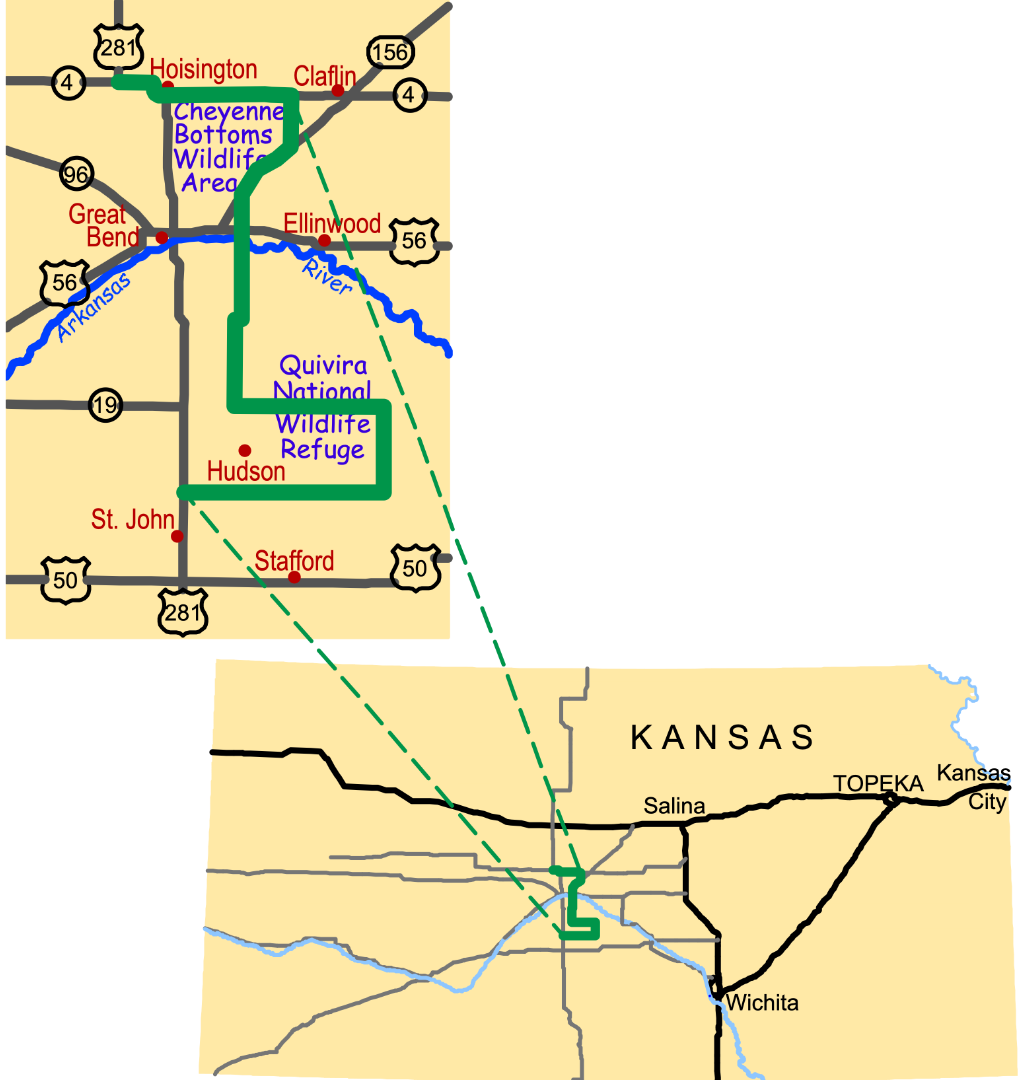Working...

Magic Muck
Fueling Wetlands Wildlife
Few people visit Cheyenne Bottoms to glimpse the humble bloodworm*. But this tiny red wriggler is one big reason these wetlands draw millions of eye-dazzling migratory birds each year. Beneath every flotilla of pelicans, every majestic crane, lies an intricate web of abundant and unheralded wetlands life.
It takes a lot of food to satisfy the millions of birds that migrate through here twice a year. Billions of bloodworms (midge larvae), feasting on decaying plant matter, become fodder for refueling shorebirds. And bloodworms are just one key strand in the wetlands food web. Cranes eat frogs, pelicans eat fish, coots eat wetland plants-all fueled by the muck. As you feast your eyes on the birds and wildlife here, remember the teaming life that supports them beneath the wetlands' surface. There is magic in our muck!
Snowy Plover
The snowy plover is one of the few shorebirds that breeds here, nesting on wetland salt flats and muddy shores. Carefully watch this plover as it feeds. You may see it tremble one foot in the mud to encourage its prey to reveal itself.
Motion and Change
Along the Byway, wetland water levels constantly shift. The wetland community thrives on these changes. In a dry summer, thousands of acres dry up and vegetation decays, enriching the muck. In wet years, these same bottomlands resemble expansive lakes, rippling with wildlife.
Download the interpretive panel: Magic Muck Panel located at the rest area on K-156 Hwy across the road from KWEC.
To listen to more information click on the Audio Tour
Go to the Gallery to view photographs contributed by visitors to the Byway.
* Bloodworms
"Bloodworms are one of my favorite subjects in the whole wide world, let me tell you! You know, one of the reasons that Cheyenne Bottoms is an incredible area for birds to feed in is because of the bloodworms. Bloodworms are invertebrates and are a larva of the midge. We have such a high concentration of bloodworms at Cheyenne Bottoms-which is an incredible fuel for birds-that they're willing to fly miles and miles and miles to get here. And then they're able to feed for a period of time, primarily on bloodworms, and that's where they build their energy to continue their trip..."
-Mike Cargill, Kansas Raptor Rehab Center, Brit Spaugh Zoo and Park
More Birds and Wildlife pages...
Birds of the Woods and Prairie
Birds of the Wetlands and Water
Wings Over the Water
Home on the Range
Jackrabbit Run
Prey and Play



